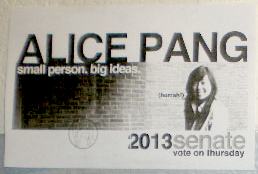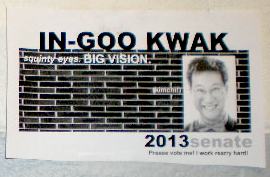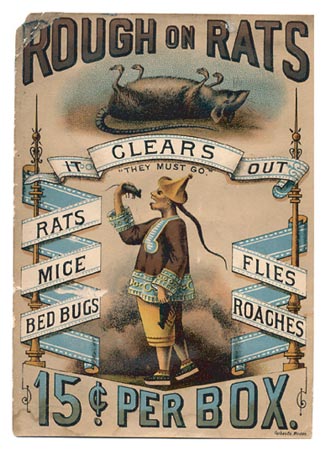Many of you have probably seen The Hangover Part 2, the sequel to the surprise hit of 2009. I recently watched the first Hangover film and mostly enjoyed it, although it was not quite as uproariously hilarious as many of my friends hyped it up to be. I have yet to see Hangover 2 and now my motivation has declined even further, after reading my friend Jeff Yang’s recent article about it in his column for the San Francisco Chronicle. Some excerpts:

“H2″ made an absurd $103 million over the three-day weekend — an all-time record for a live-action comedy, despite near-universal excoriation by critics, who called it “uninspired and unoriginal,” “unclean and mostly unfunny,” and “rancid and predictable.” What few pointed out was that, in seeking to top the already over-the-top comic sensibilities of the original, the filmmakers chose the sleaziest, easiest possible solution, unleashing a relentless bastinado of abuse at the expense of Asians, a group that they presumably felt could be targeted with minimal concern about potential backlash.
If you’re an Asian who swallowed hard upon hearing that the sequel would be set in Bangkok, you’ll need to swallow harder just to keep down your gorge at what they’ve produced. The film’s depiction of Thailand transforms the “Land of Smiles” into a bizarro realm of brute violence, grim depravity and unfettered libido, populated entirely by broad racial stereotypes: Thuggish gangsters. Wizened monks. Lascivious ladyboys. Not to mention whiz-kid pre-meds, infinitely forgiving lotus-blossom brides and the Father of All Tiger Dads. . . .
As an Asian American who enjoyed the first film, I found the sequel bluntly and inexplicably offensive — with the fact that the movie opened in the waning days of May [Asian Pacific American Heritage Month] being soy sauce in the wound.
Jeff Yang could have ranted on about the various ways in which he found Hangover 2 offensive but most of his article actually focuses on what Asian Americans can actually do about this ongoing problem of Asians and Asian Americans consistently being portrayed using racist stereotypes in mainstream Hollywood films. Specifically, he offers some thoughts about the possibility of not only creating an alternative set of filmmakers who would portray Asian Americans more accurately, but also creating an alternative audience that would be able to sustain such independent efforts. But along the way, Jeff raises some important challenges that still need to be addressed:
For an indie filmmaker, you simply can’t make money with theatrical distribution. But if you’re talking a target not of theatrical distribution but direct-to-DVD, a film with a guerrilla $250,000 budget can make back its costs and return a healthy profit if it sells 20,000 units at $20 a pop. . . .
Now, there are currently more than a million Asian Americans enrolled in college — two-thirds of whom are concentrated in eight states. It would only take two percent of them collectively purchasing a book or DVD or CD to make it solidly profitable — supporting the work of a creative artist, and enabling that creator to continue doing what he or she does, with full freedom to make art that’s appealing and authentic and true to an Asian American experience.
This is the gist of something that, in our conversations, cultural critic and academic Oliver Wang has dubbed The Two Percent Project. Here’s how it might work: Get together a group of smart, influential tastemakers — journalists, critics, student leaders, bloggers. Have them select five indie Asian American creators — writers, filmmakers, musicians — from an open call that includes anyone with a brand-new, brashly different and commercially viable product.
Send these creators on a collective national barnstorming tour of the college campuses with the biggest Asian American student representation — reading, performing, speaking, and showing their work and their potential. The costs of the tour would be covered by student organization funds and corporate sponsors.
Here’s the kicker: Although attendance at these events would be free, every attendee would have to purchase one of the five products these artists are promoting on the spot, while enrolling in an online community that gives the artists long-term engagement with their consumers. The goal? Constructing an independent audience. Reinventing the Asian American brand. And creating recorded proof that Asian American artists are marketable and that a market exists to sustain them.
Jeff’s idea sounds plausible to me, especially if Asian Americans, young and old, keep railing against movies rife with racial stereotypes like Hangover 2. Jeff’s idea doesn’t even take into consideration the growing numbers of Asian American professionals who are making good money and actually have the financial means to support such independent efforts even more than college students. If there is a plan that can incorporate them into this movement, it would certainly produce positive results.
Either way, I applaud Jeff Yang, Oliver Wang, and others who are doing more than just complaining about injustices against Asian Americans — they’re proposing potential plans of action and solutions to the problem. Their specific ideas may or may not bear fruit immediately but at the least, they get the conversation started, get ideas rolling, and will hopefully lead to some innovative thinking and action to get something done.
Even if it’s a small step, at least it’s a step in the right direction.
This article originally published at Asian-Nation.org and is copyrighted © 2013




